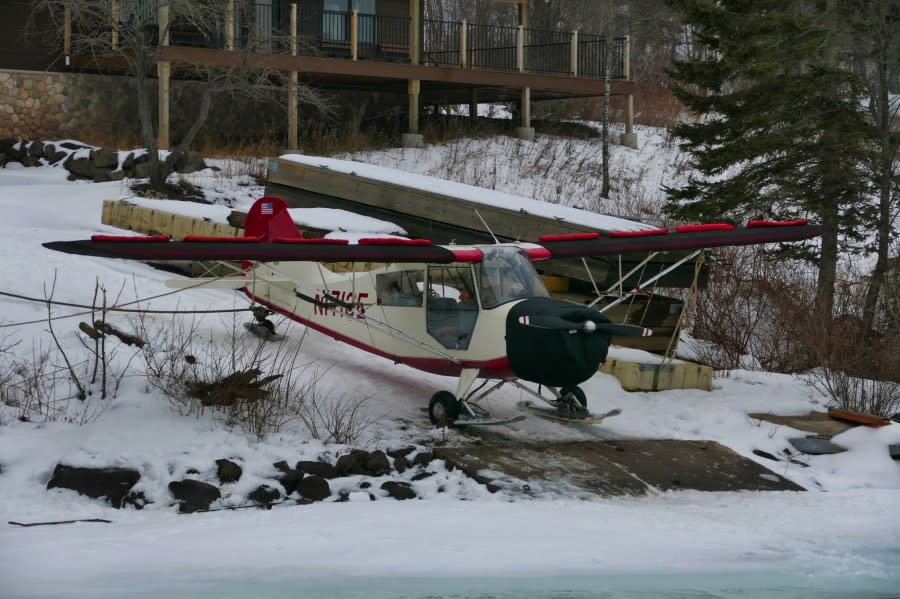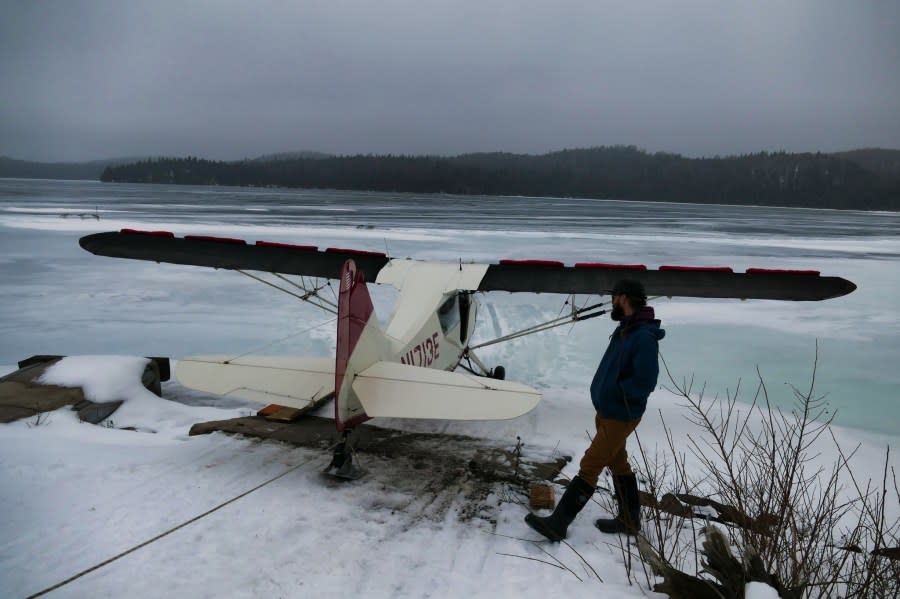2024 Isle Royale moose census complete, some insights ahead of full analysis

ISLE ROYALE, Mich. (WJMN) — The 2024 census of moose on Isle Royale was completed this past weekend, according to the Isle Royale Wolf-Moose Project. While the full study hasn’t been released yet, researchers have given us a look at new findings.
The project, which has been monitoring the two species on the island for about 60 years, announced Saturday that researchers had finished its aerial survey of the 91 plots of land they observe moose every year.
Michigan Tech finds wolf population stable, moose population in steep decline on Isle Royale
This year’s census began on Jan. 22. While one crew counted the population by air, another crew on the ground traversed the island collecting samples and observing animal behavior.
Two discoveries made by the ground crew was reported on Jan. 23. The researchers set out to find a female moose that had been wearing a GPS collar for a couple years. Finding her near Windigo, the researchers noticed she still had a calf with her.
“That discovery is notable because a large proportion of calves do not survive beyond 6 months of age,” read a Facebook post update from the crew.
U.P. native captures cougar take-down in rare trail cam footage
The second discovery was that the pair had been eating cedar and spruce. “Although it’s not uncommon for moose to browse on cedar (on average it makes up 15% of their winter diet at the west end of Isle Royale), we rarely document moose feeding on spruce,” reported the crew.
The researchers also shared a photo of an iced-over but wet Washington Harbor after three above-freezing nights. Researchers shared “there is standing water over much of the harbor, and predictions of temperatures near or above freezing for the next 4 days. This is unprecedented warmth for what is usually the coldest month of the year.”
Washington Harbor in Jan. 2024 (courtesy Isle Royale Wolf-Moose Project)
On Jan. 29, researchers posted that the warm temperatures led the team to move their survey plane off the ice out of an abundance of caution. In their 65 years of studying the island, researchers say this is the first time the thickness of the ice has been concerning enough to warrant such a move.
Survey plane on Isle Royale (courtesy Isle Royale Wolf-Moose Project) Survey plane on Isle Royale (courtesy Isle Royale Wolf-Moose Project) Survey plane on Isle Royale (courtesy Isle Royale Wolf-Moose Project) Survey plane on Isle Royale (courtesy Isle Royale Wolf-Moose Project)
While the final count has not been released, the researchers say they counted more moose calves than last year.
This comes after a collapse of a recent explosion in the moose population from 2010-2019, topping out at 2,060. A spike like that had not been recorded since 1996. Both events corresponded to a struggling wolf population.
2020 saw the moose population fall significantly—a trend which continued through the 2022-2023 study which reported an approximate 54% decline in the moose population since that 2019 peak. You can find the full 2022-2023 study here.
To keep up with the latest updates from the researchers, check in on their Facebook page.
For the latest news, weather, sports, and streaming video, head to WJMN - UPMatters.com.






